7 Best Grass Types for Montana
BY KIMBERLY MAGERL | MAY 11TH, 2023 | LAWN CARE, MONTANAMontana is rich in natural resources, including gemstones, palladium, and platinum, earning it the moniker of “The Treasure State.” Its climate is classified as semi-arid or steppe, with its mountainous western regions transitioning into a humid continental climate. The Treasure State’s varying elevations experience vast precipitation ranges. Its lowlands and valleys receive as little as 7 inches of rain annually, while its mountainous western half receives 35 inches or more. The 7 best grass types for Montana thrive in the semi-arid environment and withstand the long, cold winters. Read on to discover suitable varieties for your landscape.
- Cool-Season vs. Warm-Season Grasses
- Grass Mixes for Montana
- Best Cool-Season Grass Types for Montana
- FAQ About Montana Grass Types
- Choose Plant and Grass Varieties for Your Montana Landscape
Cool-Season vs. Warm-Season Grasses
Montana sits in the Northern Rockies and Plains region, south of Canada, in the northwestern United States. This region has incredibly unique weather thanks to its lowlands, plains, valleys, and mountainous terrain. It is one of the coldest states, but temperatures in the high 80s are not uncommon in the summer. Despite seasonal shifts and short, warm summers, Montana is best suited to cool-season grass varieties.
All types of grass are classified into one of two categories:
- Warm-season grasses perform best in the southern half of the United States. They grow most actively in late spring and summer when temperatures are around 75 to 95 degrees Fahrenheit.
- Cool-season grasses are well-suited to northern climates with cold winters and distinct seasons. They grow most actively in early spring and fall when temperatures are around 55 to 75 degrees Fahrenheit.
Grass Mixes for Montana
Montana’s vast elevation ranges, sunlight variances, and shifting temperatures create unique microclimates. All grass types have specific needs, and not all grass varieties will grow well in your landscape. It is important to select a turfgrass suitable for the sun exposure, soil, and water capabilities of your landscape.
Montana’s microclimates are best suited to a mixture of grass species to create a hardy blend that will withstand whatever Mother Nature throws at it.
Moderate Lawns
The Goldilocks Zone for Montana microclimates has moderate irrigation, sunlight, and fertility levels, providing not too much or too little of any one area. Seed your lawn with a mixture of Kentucky bluegrass, fine fescue like creeping red fescue or Chewing’s fescue, and perennial ryegrass. Aim for a ratio of 60% Kentucky bluegrass, 30% fine fescue, and 10% ryegrass.
Shaded Lawns
Shaded lawns with moderate irrigation and fertility levels require a unique ratio of grass seed mixture with an emphasis on shade-tolerant fine fescue. Kentucky bluegrass struggles to grow in densely shaded landscapes. Seed your lawn with 60% fine fescue, 30% Kentucky bluegrass, and 10% perennial ryegrass, and maintain heights between 2.5 to 3 inches.
Semi-Dryland Lawns
The Great Plains encompassing the eastern two-thirds of the Treasure State create semi-drylands. Seed your water-poor landscape with a drought-tolerant turfgrass variety like tall fescue or sheep fescue, a type of fine fescue. These clumping bunchgrass types do not require a mixture of seeds and can be sewn alone, but be sure to seed thickly to form a dense home landscape.
Dryland or Non-Irrigated Lawns
Non-irrigated landscapes or those located in dryland areas benefit from non-traditional turfgrasses like crested wheatgrass, streambank wheatgrass, or smooth bromegrass. These drought-tolerant turfgrasses form sod but can go dormant during long drought periods. Sew your arid landscape with any mixture or cultivar you choose. Never mow dryland cultivars less than 3 inches.
Best Cool-Season Grass Types for Montana
The following cool-season grass types adapt to the climatic and soil conditions of Montana:
1. Kentucky Bluegrass
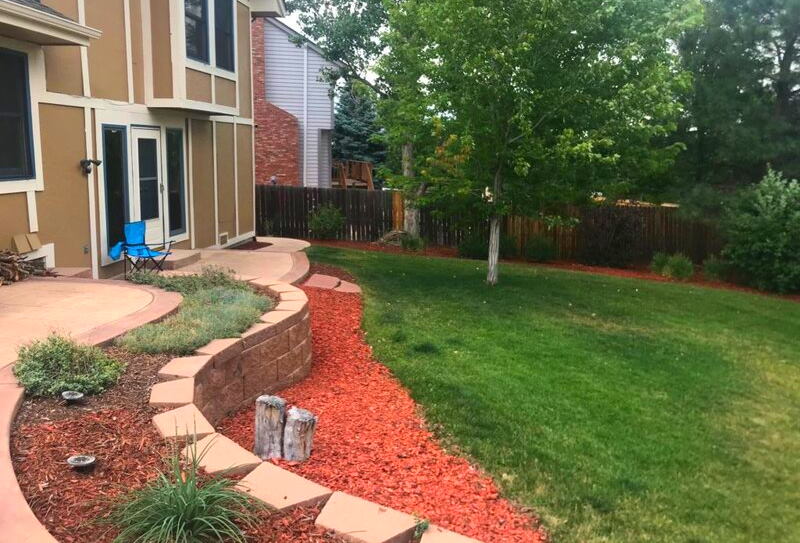
Photo Credit: Brenda Ryan / Wikilawn
Kentucky bluegrass is a high-maintenance, cool-season cultivar that grows well throughout Montana, especially the western half of the state. It has low drought tolerance but withstands cold and winter conditions well, forming a thick sod. It is prone to disease and insects but recovers quickly from damage thanks to rhizomes and its spreading growth habit.
Kentucky bluegrass is recognizable for its famed blue-green color, fine texture, and dense appearance. It is wear-tolerant but slow to green up in the spring. To combat the turfgrass’ high-maintenance needs, seed your lawn with a mixture of tall or fine fescue and Kentucky bluegrass.
Classification: Cool-season grass
Spreads by: Rhizomes
Shade tolerance: Low to moderate; prefers full sun
Drought tolerance: Moderate
Foot traffic tolerance: Low to moderate; recuperates well
Maintenance needs: Moderate
Recommended mowing height: 2-3 inches; mow taller during summer
Potential for disease: Moderate to high; snow molds, summer patch, leaf spot, fairy rings, dollar spot, and necrotic ring spot can occur
Potential for pests: Moderate to high; most common pests are chinch bugs, bluegrass billbugs, grubs, and greenbugs
Soil pH: 6-7
Soil type: Well-drained, fertile soils
Other notes: It is most often mixed with other species. Regular watering is necessary because of its shallow roots. Poor soil conditions and lack of water can cause diseases, but newer cultivars are more hardy and resistant to disease.
2. Fine Fescue
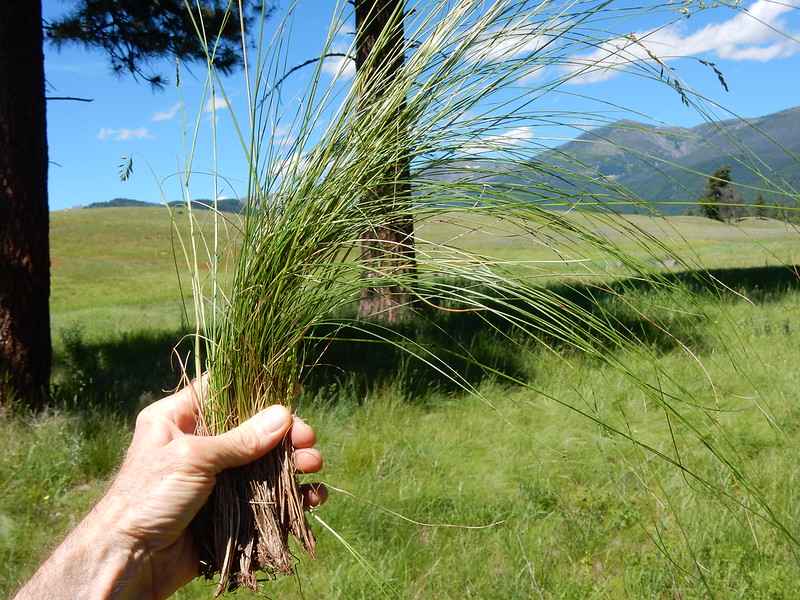
Red Fescue – a species of fine fescue
Photo Credit: Matt Lavin / Flickr / CC BY-SA 2.0
Fine fescue encompasses several varieties, including Chewing, Red, Sheep, and Hard fescues. Cultivars are bunching type cool-season grasses with good shade tolerance. They adapt to a range of soils, including Montana’s Scobey soil.
Fine fescues are low-maintenance but more expensive than most seeded cultivars. They are drought and cold-tolerant but have moderately low wear tolerance. Cultivars have a soft texture and narrow, deep green leaf blades. Miix fine fescue cultivars with Kentucky bluegrass to create a resilient and lush home lawn.
Classification: Cool-season grass
Spreads by: Bunch-type grasses with one exception: creeping red fescues possess rhizomes
Shade tolerance: Moderate to high
Drought resistance: Moderate to high
Foot traffic tolerance: Low to moderate
Maintenance needs: Low
Mowing height: 1.5-3 inches
Potential for disease: Moderate; red thread, leaf spot, dollar spot, summer patch, powdery mildew, and downy mildew can occur
Potential for pests: Moderate; most common pests are chinch bugs, sod webworms, grubs, billbugs, winter mites, and crane flies
Soil pH: 5.5-6.5
Soil type: Well-drained soils; tolerates infertile and sandy soils
Other notes: Often used in a mix with other cool-season grasses, especially in sun/shade mixes
3. Tall Fescue
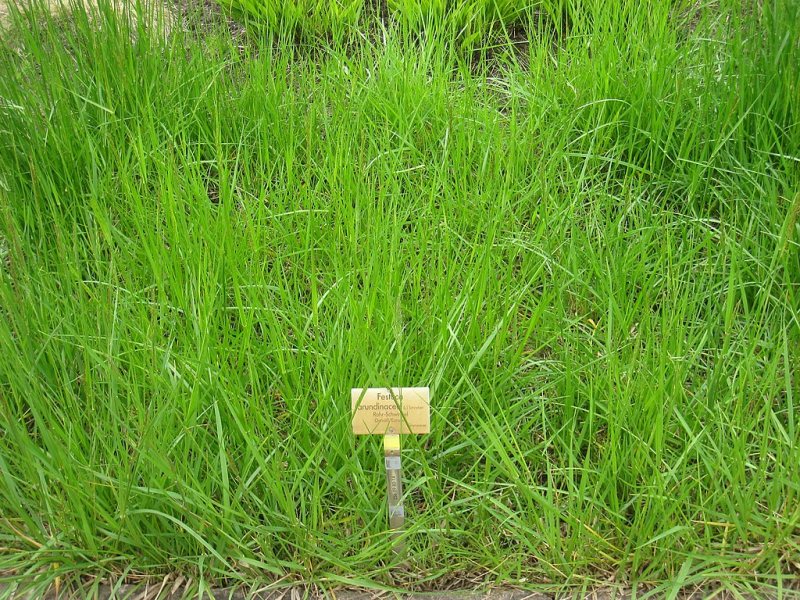
Photo Credit: Daderot / Wikimedia Commons / Public domain
Tall fescue grows well throughout Montana, surviving most drought conditions of the Plains region. It is shade and cold-tolerant and grows best in spring and fall. Cultivars are quick to green up and produce little thatch. Tall fescue has a clumping growth habit with deep roots and a sparse appearance.
The turfgrass has an attractive medium to dark green color and coarse texture. It requires regular watering, fertilization, and mowing. Tall fescue stands up to heavy foot traffic and grows well in a range of soils, including clay and sand. Cultivars are not the most attractive choices for home lawns. However, homeowners appreciate their climatic adaptability, especially in the seasonal variances of Big Sky Country.
Classification: Cool-season grass
Spreads by: Tillers (Bunch-type)
Shade tolerance: Moderate to high
Drought tolerance: Moderate
Foot traffic tolerance: Moderate; recovers slowly
Maintenance needs: Moderate
Recommended mowing height: 2-4 inches (Check your cultivar and state recommendations. Many cultivars grow best when mowed on the tall side.)
Potential for disease: Low to moderate; can be prone to leaf spot, seedling disease, and brown patch
Potential for pests: Low to moderate; susceptible to armyworms, cutworms, sod webworms, and grubs
Soil pH: 5.5-6.5
Soil type: Adaptable; prefers clay soils
Other notes: Fertilize in September and November. Plant fresh grass seeds every couple of years to maintain a dense lawn and fill thinning spots.
4. Perennial Ryegrass

Photo Credit: Dr Mary Gillham Archive Project / Flickr / CC BY 2.0
Perennial ryegrass is a bunching grass that mimics the appearance of Kentucky bluegrass but does not provide most of the popular cultivar’s better qualities. It has a dark green color and fine texture. Perennial ryegrass is disease and insect-prone and intolerant to drought, freezing temperatures, flooding, and wind.
Cultivars do not survive Montana’s harsh climate and are not a permanent home lawn solution. Instead, perennial ryegrass acts as a nurse grass in seed mixes to protect other cultivars like Kentucky bluegrass during their germination process. The presence of perennial ryegrass in seed mixtures is optional.
Classification: Cool-season grass
Spreads by: Tillers (Bunch-type)
Shade tolerance: Low; requires four to five hours of sunlight
Drought tolerance: Low
Foot traffic tolerance: High; recuperates poorly
Maintenance needs: High; requires frequent watering, mowing, and fertilization
Recommended mowing height: 2-3 inches
Potential for disease: High; susceptible to flag rust, stem rust, leaf spot, downy mildew, brown patch, and red thread
Potential for pests: High; chinch bugs and greenbug aphids can occur
Soil pH: 6-7
Soil type: Adaptable; prefers well-drained, fertile soils
5. Crested Wheatgrass
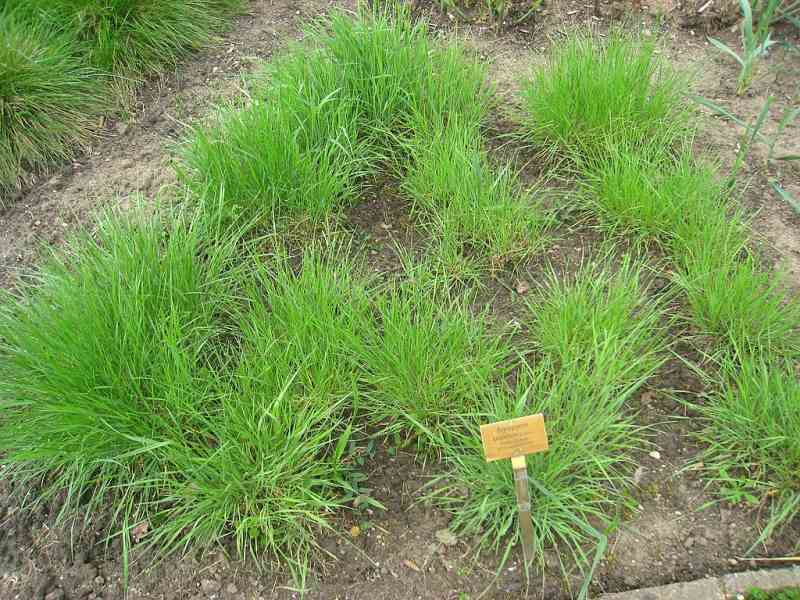
Photo Credit: Daderot / Wikimedia Commons / Public domain
Crested wheatgrass is a perennial, cool-season grass commonly used in pastures as forage for livestock. However, thanks to high drought tolerance, this grass type makes a great low-maintenance lawn for residents in dryland areas or homes without irrigation. Crested wheatgrass survives with as little as 8 inches of annual rainfall.
Cultivars tolerate a wide range of soils and are not prone to diseases. Crested wheatgrass is extremely cold and fire tolerant and very long-lived. It has a light-green color and a bunching growth habit.
Classification: Cool-season grass
Spreads by: Tillers (Bunch-type)
Shade tolerance: Low to moderate; prefers full sun
Drought tolerance: High
Foot traffic tolerance: High
Maintenance needs: Low
Recommended mowing height: 3+ inches
Potential for disease: Low; wheat leaf rust can occur
Potential for pests: High; susceptible to black grass bugs, leafhoppers, grubs, mature click beetles, and billbugs
Soil pH: 6+
Soil type: Adaptable; prefers medium-weight sand-loam or clay-loam soils; intolerant of loose, sandy soils, heavy clays, or saline soils
Other notes: All cultivars are fire and cold-tolerant and can withstand occasional flooding. They are long-lived and often used as forage for grazing animals.
6. Streambank Wheatgrass
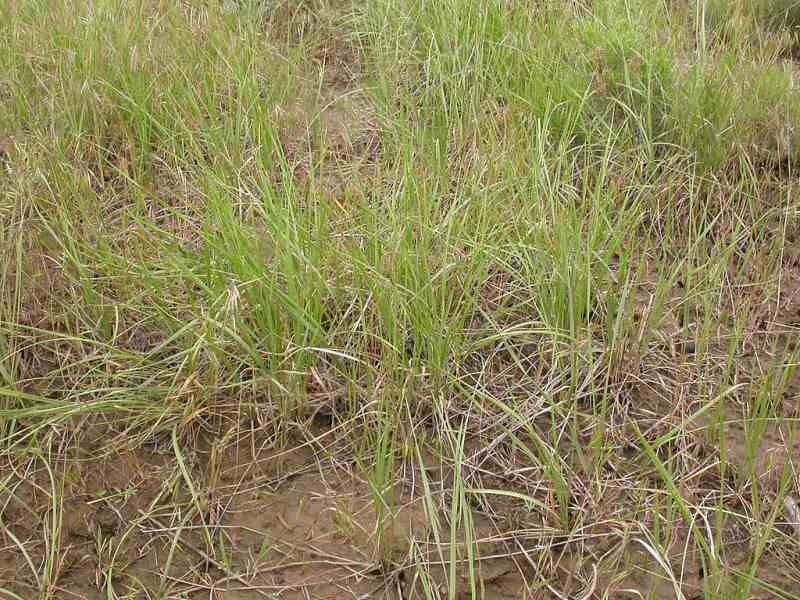
Photo Credit: Matt Lavin from Bozeman, Montana, USA / Wikimedia Commons / CC BY-SA 2.0
Streambank wheatgrass is another popular Montana farming grass. It forms sod for home lawns and spreads via underground rhizomes. Unlike crested wheatgrass, streambank wheatgrass is not used as a forage. It is low-maintenance and extremely drought-tolerant, surviving on as little as 6 inches of annual rainfall.
Streambank wheatgrass adapts to most soil types. It has a light green color and fine-textured leaf blades. It is native to the intermountain western regions of the United States and spreads slowly. Streambank wheatgrass requires thick seeding for a dense lawn.
Classification: Cool-season grass
Spreads by: Rhizomes
Shade tolerance: Low to moderate; prefers full sun
Drought tolerance: High
Foot traffic tolerance: High
Maintenance needs: Low
Recommended mowing height: 3+ inches
Potential for disease: Low; wheat leaf rust can occur
Potential for pests: High; susceptible to black grass bugs, leafhoppers, grubs, mature click beetles, and billbugs
Soil pH: 6-9.5
Soil type: Adaptable; dry or wet, well-drained to poorly drained, deep, sandy, clay, or loam soils
7. Smooth Bromegrass
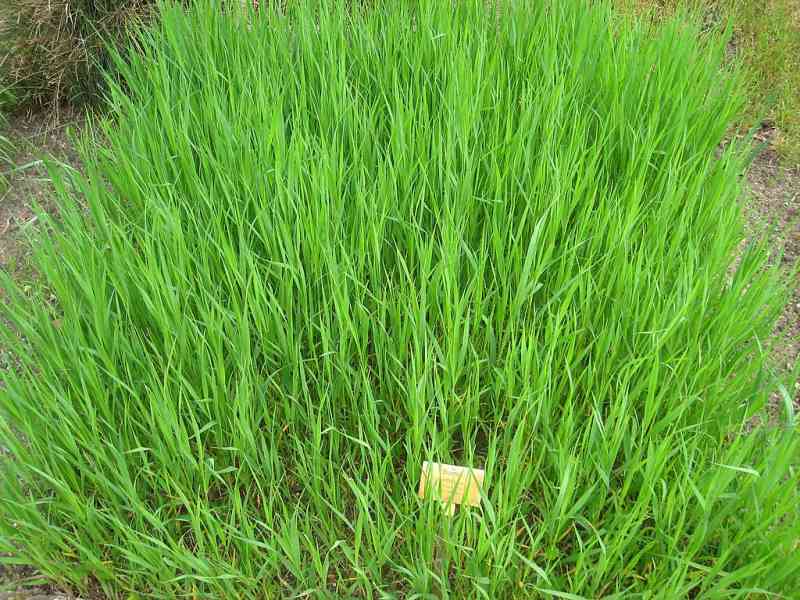
Photo Credit: Daderot / Wikimedia Commons / Public domain
Smooth bromegrass is another sod-forming perennial grass with extreme drought tolerance. It is an aggressive grass, spread laterally by underground rhizomes. This Depression-era favorite tolerates Montana’s extreme temperatures and thrives in its deep Scobey soil.
Smooth bromegrass has a bright green color, an extensive root system, and fine leaf blades. It doesn’t tolerate heavy traffic well, and dull mowing equipment can damage its blades. However, cultivars are not prone to disease or pests.
Classification: Cool-season grass
Spreads by: Rhizomes
Shade tolerance: High
Drought tolerance: High
Foot traffic tolerance: Moderate
Maintenance needs: Moderate; requires early spring and fall applications of nitrogen fertilizer
Recommended mowing height: 3+ inches
Potential for disease: Low; selenophoma leaf spot can occur
Potential for pests: Low; susceptible to grubs
Soil pH: 6-7
Soil type: Adaptable; prefers well-drained silt-loam or clay-loam soils
FAQ About Montana Grass Types
No. Perennial ryegrass acts as a nurse grass for other varieties. It germinates and establishes quickly, protecting the seeds and emerging blades of other cool-season grass varieties like fine fescue, tall fescue, and Kentucky bluegrass.
Perennial ryegrass will die as your permanent mixture takes over. Many homeowners leave perennial ryegrass out of their seed mixes, replacing the 10% with a fescue variety.
The best time to sew your Montana lawn is around Labor Day, the first Monday in September. Aim to seed your lawn between mid-August and mid-September to complement the natural fall growth cycle.
Early morning is the best time to water your lawn. 30% of the water applied during midday irrigation sessions is lost to evaporation. In the morning, winds are calmer and temperatures are lower, so there is less risk of water loss from evaporation or scorching from the sun. Additionally, foliage needs time to dry before nightfall. Wet foliage can lead to disease and rot.
Choose Plant and Grass Varieties for Your Montana Landscape
Montana grass cultivars are suited to your unique USDA hardiness zone. Montana’s zones include 3a to 6a, with most of the state falling between 3b to 4a. All turfgrasses have their own characteristics and needs. Choose a variety that works well for your microclimate and lifestyle.
Your grass comes together to help form your complete landscape. There are numerous landscaping options for the Treasure State, and you can take advantage of the state’s four seasons. Be sure to check out our Montana landscaping guides to help you plan your landscape.
- 20 Best Native Plants for Montana
- Drought-Resistant Landscaping Ideas
- Fire-Resistant Landscaping Ideas
From historic western cities like Missoula to riverside destinations like Billings, no matter which part of the state you live in, conquer Big Sky Country’s ever-changing climate. Let Wikilawn connect you with a local lawn care pro today to help you maintain a green and healthy lawn, so you have more free time to explore the Treasure State’s rich resources.
Main Photo Credit: Montana State Capitol / R. Sieben / Wikimedia Commons / CC BY 3.0